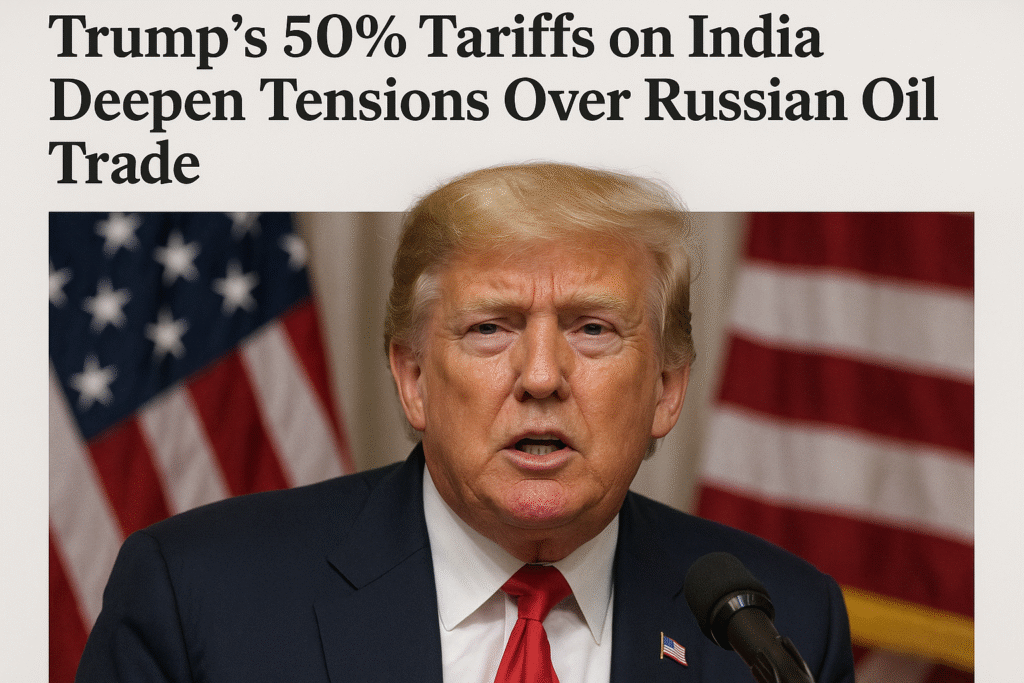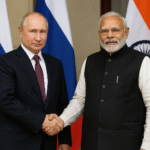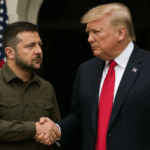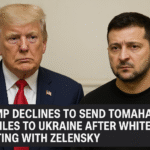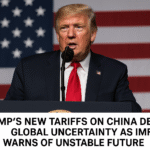By Harshit, New Delhi | October 18, 2025 7 PM IST
Washington’s Pressure Meets Delhi’s Energy Realities
First came the tariffs — sweeping 50% duties on Indian goods in August — justified by Washington as punishment for New Delhi’s continued purchase of Russian oil. Then, on Wednesday, President Donald Trump claimed that Indian Prime Minister Narendra Modi had “privately agreed” to end those imports “within a short period of time.”
The next day, both India and Russia pushed back. Moscow’s ambassador to India, Denis Alipov, said Russian oil was “very beneficial for the Indian economy and the welfare of Indian people.” Meanwhile, India’s foreign ministry distanced itself from Trump’s comments, stating that its energy policy was “guided by the interests of Indian consumers in a volatile energy scenario.” Later, a spokesperson clarified that he was unaware of “any conversation yesterday” between Modi and Trump.
Caught between Washington’s economic pressure and Moscow’s energy partnership, India’s oil strategy has become a high-stakes balancing act.
How Critical Is Russian Oil to India’s Economy?
India is the world’s third-largest oil importer, and in the past year alone, it spent $52.7 billion on Russian crude — about 37% of its total oil bill. Other major suppliers include Iraq, Saudi Arabia, the UAE, Nigeria, and the United States.
Before the Ukraine war reshaped global trade, India’s oil imports were more diversified. In 2021–22, its top suppliers were Russia, Iraq, Saudi Arabia, the UAE, the U.S., Brazil, Kuwait, Mexico, Nigeria, and Oman. Imports from these countries fluctuated with price changes and diplomatic shifts.
Despite popular perception, India also imports significant petroleum volumes from the U.S. In 2024 alone, New Delhi bought $7.7 billion worth of American petroleum products, including $4.8 billion in crude oil, according to data from the Global Trade Research Initiative (GTRI). Yet, India still ran a $3.2 billion petroleum trade deficit with Washington that year.
How Sanctions and War Shifted India’s Oil Map
India’s energy mix has undergone two major transitions over the past decade.
The first came between 2018–2022, when sanctions forced India to phase out oil from Iran and Venezuela, which once supplied 17% of India’s crude. Their absence was filled by Middle Eastern suppliers like Iraq and Saudi Arabia.
The second transformation began after Russia’s invasion of Ukraine in 2022. With Western buyers cutting back, Russia offered steep discounts to India. Imports of Russian oil soared from 4 million tonnes in 2021–22 to over 87 million tonnes in 2024–25. Those discounts — 14.1% on average in 2022–23 and 10.4% in 2023–24 — saved India roughly $5 billion a year, or 3–4% of its total crude bill.
While Middle Eastern suppliers maintained stable volumes, U.S., Brazilian, Kuwaiti, Mexican, and Nigerian exports to India fell sharply. In effect, Russia’s rise came at the expense of nearly every other supplier.
Why Russian Oil Still Matters
For India, the economics remain compelling. The discounted Russian crude may represent less than 1% of India’s total $900 billion import bill, but it still means billions in annual savings. Experts argue that cutting off Russian oil could drive up global prices, erasing those savings and worsening inflation worldwide.
“Buying discounted Russian crude has helped Delhi cushion its economy while quietly stabilizing global prices,” said Partha Mukhopadhyay, a researcher at the Centre for Policy Research in New Delhi.
Moreover, most Indian refineries are designed for medium-to-heavy crude, like Russia’s Urals blend. Replacing it with lighter U.S. shale oil would require expensive reconfiguration and could reduce yields of diesel and jet fuel — key to India’s growing transport sector.
The Strategic Trade-Off
According to Ajay Srivastava, head of GTRI and former trade official, Russian oil offers India both price stability and refinery compatibility.
“The trade-off for Delhi is stark — keep buying discounted Russian oil and risk U.S. retaliation, or pivot to more expensive American and Gulf grades and face higher domestic fuel prices,” Srivastava said.
That dilemma is now at the heart of India’s foreign policy. With the delayed India–U.S. trade deal hanging in the balance, Delhi must choose between short-term savings and long-term strategic stability.
As Trump’s tariffs tighten and U.S. elections loom, the question is not whether India can afford Russian oil — but whether it can afford to stop buying it.

